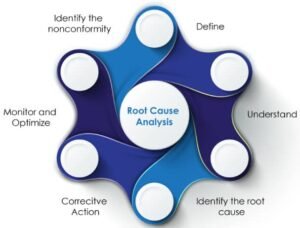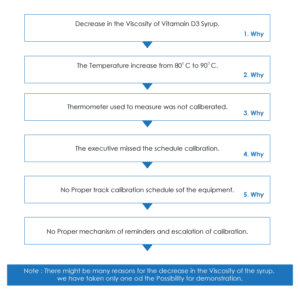Root Cause Analysis (RCA) is a method that is used to address a problem or non-conformance in the quality process to get to the “root cause” (actual cause of origin) of the non-conformity. RCA helps to correct or eliminate the cause and prevent the problem from recurring (preventive action). Root cause analyses is aimed at improving products or processes quality and must an in systematic ways to be effective.
Different Methods of doing Root Cause Analysis:
Root Cause Analysis Methodology
- Fish bone technique
- The “5” Why’s technique.
- Barrier Analysis
- Change Analysis
- Casual Factor tree analysis
- Failure mode and effects analysis
- Pareto analysis
Advantages:
- To identify non-conformity and the causes, so that permanent solution can be found.
- To develop a logical approach of problem-solving, using data that already exists in QMS (Quality Management System)
- To identify current and also future needs for organizational quality improvement.
- To establish a repeatable systematic step by step processes, in which one process can confirm the results of another with deep analysis.
- Not having the ability to understand the problem and therefore not defining it correctly.
- Not considering all possible failure modes.
- Not able to identify all root causes.
- No proper defined solution for the non-conformity.
The “5” Why technique causes mapping
Non-conformity identified: Decrease in the viscosity of Vitamin D3 syrup.
The “5” why technique can be expanded to 15 why or 150 why the deeper you go the more thorough analyzing takes place and reveals better solutions
Contact us for more information about the AmpleLogic Quality Systems Offerings.





























